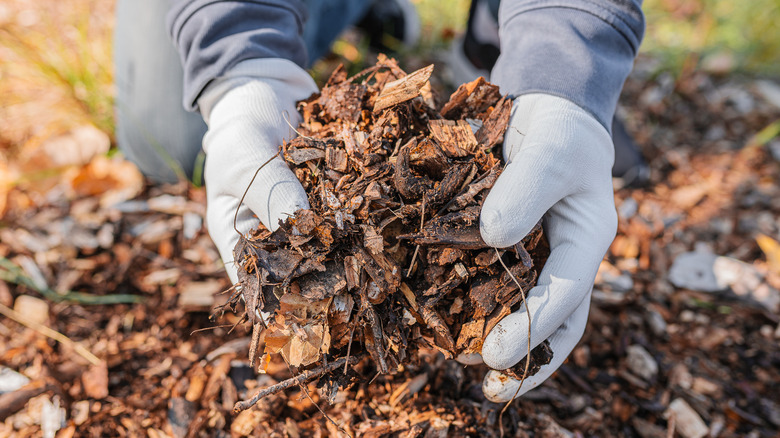If You Live In These States It's Time To Prep Your Garden For The First Snow
By the time we've taken down the last of the Halloween decor, the first frost date has come and gone in much of the U.S. That means you've probably done lots of winter preparations in your yard, or you've missed the window and accepted the losses. In many states, you're likely already eyeing the forecasts warily for snow if you haven't already experienced a few flakes — or a few inches. It shouldn't come as a surprise that the northern reaches of the country and high elevations are among the first to see the white stuff falling. Looking at trends from the last few decades, a wide band cutting the middle of the U.S. from east to west, dipping south in the Rockies and north nearly to Canada, is ripe for the first snow in November.
Whether it'll be a dusting or a dumping, the Northeast, Midwest, Central Plains, and the high country in the Southwest and Pacific Northwest should brace for snow in November. So if you live in the states within the northern parts of the U.S., it's definitely time to prep your garden for snow. Typically, all of these spots have already experienced a killing frost, but there are tasks to get your yard winter-ready that go beyond harvesting edibles and overwintering tender plants that you'll want to tackle before snow blankets your landscape. Much of this work involves protecting perennials and giving our resting plants and soil some care so they will be perky and productive come spring.
Where in the U.S. to prepare for November snow, and how to do it
This year's polar vortex is bound to keep us on our toes, so don't let a blizzard creep up on you. In diagonals from Maine to West Virginia, Michigan to northern Texas, and inland Washington to New Mexico, get your yards and gardens ready for wintery weather happening at any time from November on. Few areas in these states will have avoided a few nighttime freezes, so it's high time to clear out dead plant material from your frost-tender vegetables like tomatoes, squash, and beans, as well as your summer annual flowers. Only compost this waste if it shows no signs of disease; otherwise, throw it away or burn it on a carefully tended fire.
Treating your garden beds to a thick layer of compost will allow its goodness to sink in over the winter and ready the soil for a spring full of promise. Top this with mulch for control against erosion and weeds, and to retain nutrients. Some hardy plants like brussels sprouts, spinach, collards, and tough herbs like thyme and sage will do fine if left in the ground, but surrounding them with a decent layer of mulch is good insurance against the chill. You may have mulched your yard already in the fall, but a second layer of mulch can help your garden plants survive the winter after your first frost.

